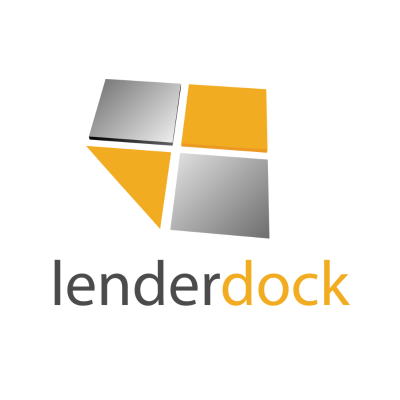In the fast-paced world of insurtech, the role of risk data
analytics and centralized risk data platforms cannot be overstated. These
innovative tools are instrumental in analyzing and mitigating risks in the
insurance industry.
As underwriting departments evolve, the ability to consolidate all risk data
into a single data lake is powering their transformation. This strategy enables
insurance carriers to unlock the immense potential of data analytics,
facilitating informed decision-making, proactive risk management, and improved
customer interactions. In this article, we will explore the rising importance
of constructing a singular risk data platform, along with an integrated data
analytics suite, and its transformative effect on underwriting departments in
insurance carriers.
The Role of Centralized Risk Data Platforms
A centralized data platform acts as a single repository for all risk-related
data, providing a comprehensive view of risks to all stakeholders. This
platform has the capability to collate risk data from various sources, both
paid and unpaid. It encompasses policyholder information, claims history, and
also external data such as weather patterns, market trends, satellite imaging,
IoT devices, drones, spatial imaging, demographic insights, and site survey
data. Armed with a 360-degree overview, underwriting departments can better
understand potential risks, optimize pricing and product decisions, and
collaborate with loss control departments to deliver robust risk management
strategies in real-time.
Historically, data sources have been accessed by multiple business units
according to their specific needs, resulting in data being isolated in various silos
across the organization. However, there is now an opportunity to merge these
diverse data sources into a single risk data platform. This integration
streamlines data management processes, reduces the chances of errors, and
increases operational efficiency. Ultimately, this leads to more reliable
underwriting decisions and enhanced loss control efficiencies.
The Power of Data Analytics
Data analytics, combined with a centralized platform, can provide real-time
insights into various factors and patterns. As data is continually updated and
analyzed, underwriting and loss control departments can swiftly react to
emerging risks and adjust their risk management strategies as required. This
agility is particularly invaluable in rapidly fluctuating scenarios such as
weather-related events or economic fluctuations.
Insurance carriers can leverage a centralized data repository and advanced
analytics tools to make data-driven decisions across numerous operational
aspects. This includes adjustments to pricing and coverage, proactive risk
mitigation measures, the creation of new products, and the identification of
market threats. Decisions backed by solid data lead to more informed and
accurate choices, maximizing profitability and strengthening customer
engagement.
Enhancing the Customer Experience
A centralized platform brings numerous benefits, one of which is an enhanced
customer experience. By having access to comprehensive customer data, insurance
carriers can offer tailored policies, products, and services that specifically
address the unique requirements of each business. This personalized approach
ensures a superior level of satisfaction and meets the specific needs of their
customers. Real-time data analysis empowers quick and efficient claims
processing, paving the way for prompt responses to customer requests. By
leveraging this technology, businesses can build trust and loyalty by meeting
their customers’ needs with utmost speed and accuracy.
Transforming Underwriting and Loss Control Departments
The combination of data analytics and a centralized risk data platform is
truly transforming the underwriting and loss control departments in insurance
carriers. This powerful amalgamation is bringing about a revolution, enabling
more accurate risk assessment and enhanced decision-making capabilities for
insurers. By harnessing the power of data, these departments can now operate
with greater efficiency, agility, and precision, ultimately contributing to
improved profitability and customer satisfaction.
By having a centralized repository to capture, integrate, and analyze vast
amounts of data, carriers gain the ability to make informed decisions backed by
data. This empowers them to proactively manage risks and deliver exceptional
customer experiences. It’s all about using data-driven insights to drive
impactful outcomes in the industry.
In the dynamic landscape of insurtech, where transformative technologies,
open systems, AI, and inventive data-centric structures are embraced,
underwriting and loss control divisions are enhancing their resilience,
efficiency, and customer focus. This trajectory is propelling the insurtech
sector towards a future characterized by innovation and rapid expansion.
Wrap up
In conclusion, the emergence of centralized risk data platforms and data
analytics is reshaping the landscape of InsurTech. These advanced tools are
enabling insurance carriers to harness the power of data and make informed
decisions that drive profitability and customer satisfaction. By consolidating
risk data into a single repository and leveraging data analytics, underwriting
and loss control departments are becoming more agile, efficient, and
customer-centric. As the insurtech sector continues to evolve, the adoption of
these transformative technologies will pave the way for a future of innovation
and rapid growth.
Insurance carriers can also use a centralized data repository and advanced
analytics tools to make data-driven decisions across numerous operational
aspects. These include adjustments to pricing and coverage, proactive risk
mitigation measures, the creation of new products or identification of market
threats. Decisions backed by solid data lead to more informed and accurate
choices, maximizing profitability and strengthening customer engagement.
A centralized platform offers numerous benefits that greatly enhance the
customer experience. By having access to extensive customer data, insurance
carriers can create tailored policies, products, and services that cater
specifically to their individual business needs. This level of personalization
ensures an exceptional customer experience and sets insurance carriers apart
from the competition.
Utilizing the capabilities of real-time data analysis, the process of claims
processing can be revolutionized, rendering it swift and efficient. This
capability empowers businesses to promptly address customer inquiries,
cultivating a foundation of trust and loyalty. This streamlined approach
instills confidence in customers, ensuring that their requirements are met
promptly and accurately, thereby cultivating enduring affiliations with your
brand.
The convergence of data analytics and a centralized risk data platform is
spearheading a transformative evolution within insurance carriers’ underwriting
and loss control divisions. This formidable fusion equips carriers to make
judicious decisions based on comprehensive insights, accurately evaluate risks,
and heighten overall operational efficiency. The adoption of this cutting-edge
technology stands as a pivotal game-changer within the insurance realm.
The prowess to amass, integrate, and analyze this wealth of data within a
singular repository empowers carriers to execute vital, data-powered choices,
proactively manage risks, and deliver unparalleled customer experiences.
In the dynamic trajectory of the insurtech arena, characterized by the
assimilation of transformative technologies, open systems, AI, and pioneering
data-centric frameworks, underwriting and loss control divisions are poised to
fortify their resilience, efficiency, and customer-centric focus. This
trajectory propels the insurtech sphere into an era of innovation and rapid
expansion, charting a course toward a future defined by progressive growth.











